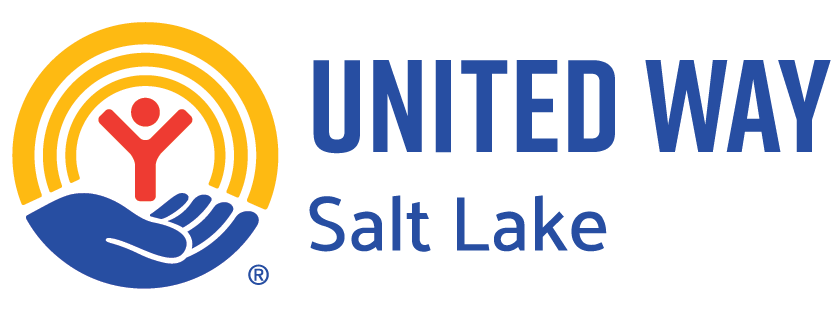 by Abram Sherrod
by Abram Sherrod
Community School Director
Year one is officially in the books and the one thing that I’m certain of is the community schools model is highly effective and impactful. At face value, the concept of community schools seems simple. In order to be a highly effective community school, one needs to be able align community resources, have meaningful conversations with partners that create systemic change, and work closely with school administrators and teachers to discover, analyze, and determine what are the school’s priorities. However, there is a lot more that goes into the community schools model. What the job description omits is it takes a lot of empathy and interpersonal skills not only with teachers, but students to be highly effective. Here are three of crucial lessons that I’ve learned within my first year of being a community school director.
Lesson One: “There are known knowns, known unknowns, and unknown unknowns” – Donald Rumsfeld
I have always viewed education as one of the most crucial indicators of upward mobility for individuals who are impacted by intergenerational poverty. During graduate school, I had an aha moment and decided to write my thesis on education policy in the United States. However, when I was formally introduced to academia from a professional perspective, I realized that there is a lot of work that goes into being an educator. One thing I’ve learned within my first year as a community school director is academia is difficult.
Teachers are not only responsible for teaching, classroom management, and the crucial role of socializing the minds that will continue to pass the torch from generation to generation, but there is a lot of additional work that goes into being an educator. A number of teachers at Lincoln Elementary go above and beyond to ensure that children receive a quality education. Whether it’s engaging in Professional Learning Communities, focusing on Academic Parent Teacher Teams, Positive Behavioral Intervention Systems, or professional development classes. Teachers work round the clock to ensure that they have the skills that are necessary to provide children with quality education.
The first lesson I had to learn is that although I thought I had a firm grasp on the education system in the United States, I failed to realize that it continues to adapt to the times and the communities it serves. There is more work to education that we understand by observing the impacts at face value.
Coach Eddie – A teacher that not only teaches fitness, but finds ways to make children feel important and have self-esteem
Lesson Two: “The quality of your life is the quality of your relationships” – Tony Robbins
My approach to my work has always focused on developing strong interpersonal relationships, while at the same time focusing on my work. One thing I’ve learned is a smile can get you a long way. When I first walked into Lincoln Elementary, I was overwhelmed by a sea of new faces. My biggest concern was how do I establish myself in a school that had been guided by a great Community School Director for the previous three years. My approach was to walk the halls and introduce myself to as many people as possible. I immediately understood that teachers can be reluctant to new faces because schools are constantly changing environments and trust and reliability means a lot. I began to break down barriers within the school by gaining acceptance with the youth we serve. I had a goal of learning as many names and interacting with the children as much as possible, not just for the pleasure of feeling accepted within a new community but because I understood the importance of interpersonal relationships.
Connecting with students at our Super Sprinters Lunch
My first step towards acceptance was giving as many fist bumps as I could to students whenever it was possible. Acceptance by the students that attend Lincoln Elementary was crucial because it provides the school director with a direct link to the individuals that we serve. A child is more likely to come into your office and explain their situation if you have a personal connection and it makes you feel like a local celebrity as well.
As agents of change working in the nonprofit field, we sometimes fail to remember that asking for help can be difficult. Imagine being a part of a family that has needs, but you are not sure who to ask or what is available to you. Working as a Community School Director, I try to remember that a lot of the time families may be reluctant to reach out to the school to secure their needs. However, if they are constantly greeted with a smile and individuals who are more than willing to help it provided more opportunities to create the necessary change for a family. A smiling face can be the first step in working with a family to help them avoid homelessness.
Lesson Three: “It takes a village to raise a child” – African Proverb
Recently, I’ve been approaching my work with the mentality that it takes a village to ensure that the children who attend Lincoln Elementary are able to be successful in life. It has become abundantly clear that no one person in our school is able to do solve all of the problems that individuals faces in the neighborhood. However, United Way in partnership with Granite School District, the City of South Salt Lake, and the countless number of partners that have a stake in the area we are able to align resources and mission statements to ensure that we are moving the needle in a positive direction. A large percentage of the children who attend Lincoln Elementary are impacted by poverty and it impacts their lives in a number of different ways. Poverty limits one’s ability to receive quality healthcare, access to food, transportation, and a long laundry list of other needs that a family is not able to control when daily life is a struggle.
Utah Jazz jacket donations
My goals as a Community School Director has been to try to alleviate as many hardships ones faces as a result of being impoverished as possible. Working as a village with a number of caring teachers, administrators, community partners, and nonprofits I can say that we are moving the needle forward in our community. This year, Lincoln Elementary was able to establish a food pantry for families in need because many suffer from food insecurity and live in a food desert. We have been able to partner with the International Rescue Committee, Catholic Community Services, and Community Nursing Services to ensure that new refugee students are able to receive immunizations to prevent strain on the family and keep students from being removed from school for not having their immunizations completed. Our partnership with AmeriCorps working to decrease chronic absenteeism by providing an extra set of eyes and ears to check up on children who may fall through the cracks has seen an impressive amount of success. We have been able to work closely with the After School Program Coordinator to better align their program with the school’s vision. These are just a few of the programs or initiatives I have been blessed to work on. I cannot take credit for any success that the school has achieved within the year because it takes a village to ensure that we better serve the community. However, what I can say is that I’m proud to be accepted and a part of this community.
KPMG Book Donation
Looking back over the past year I’m realizing that I was forced to grow—as an individual and professionally. As my second year as a Community School Director fast approaches, I’m realizing that there is still a lot of work to be done which requires a lot of learning on the fly. I believe I’m up for that task because the work I put in now will increase the likelihood that the children who attend Lincoln Elementary will become successful adults.





